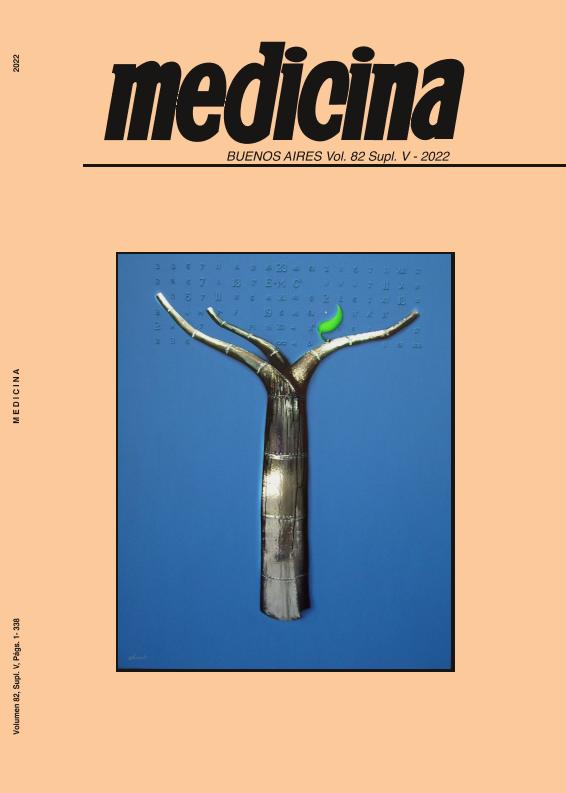Evento
Antioxidant activity of atrial natriuretic peptide (ANP) in the exocrine pancreas
Courreges, Ana Paula ; Alvarez, Guadalupe Inés
; Alvarez, Guadalupe Inés ; Ochoa, Federico Claudio; Lairion, Fabiana Norma; Zotta, Elsa; Repetto, Marisa Gabriela
; Ochoa, Federico Claudio; Lairion, Fabiana Norma; Zotta, Elsa; Repetto, Marisa Gabriela ; Vatta, Marcelo Sergio
; Vatta, Marcelo Sergio ; Bianciotti, Liliana Graciela
; Bianciotti, Liliana Graciela
 ; Alvarez, Guadalupe Inés
; Alvarez, Guadalupe Inés ; Ochoa, Federico Claudio; Lairion, Fabiana Norma; Zotta, Elsa; Repetto, Marisa Gabriela
; Ochoa, Federico Claudio; Lairion, Fabiana Norma; Zotta, Elsa; Repetto, Marisa Gabriela ; Vatta, Marcelo Sergio
; Vatta, Marcelo Sergio ; Bianciotti, Liliana Graciela
; Bianciotti, Liliana Graciela
Tipo del evento:
Reunión
Nombre del evento:
LXVII Reunión Anual de la Sociedad Argentina de Investigación Clínica; LXX Reunión Anual de la Sociedad Argentina de Inmunología & 3er Congreso Franco Argentino de Inmunología y Reunión Anual 2022 de la Sociedad Argentina de Fisiología
Fecha del evento:
16/11/2022
Institución Organizadora:
Sociedad Argentina de Investigación Clínica;
Sociedad Argentina de Inmunología;
Sociedad Argentina de Fisiología;
Título de la revista:
Medicina
Editorial:
Fundación Revista Medicina
e-ISSN:
1669-9106
Idioma:
Inglés
Clasificación temática:
Resumen
We previously reported that ANP is produced by the exocrine pancreasand that it plays a beneficial role in the outcome of acute pancreatitis(AP). It reduces trypsinogen activation and the inflammatoryresponse and restores glutathione depletion. In the present studywe assessed different parameters of oxidative stress and antioxidantdefenses in Sprague Dawley rats with AP induced by four repetitivecerulein injections (40μg/Kg). Thirty minutes before the firstcerulein injection animals were infused with either saline (control) orANP (1μg/Kg/h) for 60 min. Following euthanasia (60 min after thelast cerulein injection) pancreatic samples were harvested. ANOVAfollowed by a Student Newman Keuls was used for statistical analysis.Results are expressed as the mean±SD and p<0.05 or lesswere considered statistically significant (*). ANP reduced NADPHoxidase activity (U/ug protein) (2180±256 vs. 1410±216**). As ANPincreased Nrf2 nuclear translocation (0.158±0.2 vs. 0.398±0.02*)superoxide dismutase (SOD) and catalase expression were assessedby western blot and qRT-PCR. ANP increased SOD proteinand mRNA expression (0.9±0.08 vs; 1.20±0.11*; 0.63±0.12vs. 2.29±0.19*). Catalase showed no protein or mRNA changes asexpected. Carbonyl content was decreased by ANP (5.60±0.6 vs.3.60±0.9*) and TBARS showed no changes in any experimentalgroup. The oxidized form of coenzyme Q9 (isoform in rodents) wasalso reduced by ANP (477.9±56.9vs. 254.7±86.4*). These resultsfurther support previous findings showing that ANP enhances theantioxidant capacity of the pancreas in AP. Current evidence suggeststhat targeting only oxidative stress would not be sufficient tostop the progression of AP, a pathology characterized by a suddenonset and an unpredictably clinical course. In this sense ANP, whichit is produced in the exocrine pancreas, would be beneficial sinceit not only improves the redox status of the pancreas but also significantlyreduces premature trypsinogen activation and the localinflammatory response.
Palabras clave:
ATRIAL NATRIURETIC FACTOR
,
ACUTE PANCREATITIS
,
OXIDATIVE STRESS
Archivos asociados
Licencia
Identificadores
Colecciones
Eventos(IBIMOL)
Eventos de INSTITUTO DE BIOQUIMICA Y MEDICINA MOLECULAR
Eventos de INSTITUTO DE BIOQUIMICA Y MEDICINA MOLECULAR
Eventos(INIGEM)
Eventos de INSTITUTO DE INMUNOLOGIA, GENETICA Y METABOLISMO
Eventos de INSTITUTO DE INMUNOLOGIA, GENETICA Y METABOLISMO
Citación
Antioxidant activity of atrial natriuretic peptide (ANP) in the exocrine pancreas; LXVII Reunión Anual de la Sociedad Argentina de Investigación Clínica; LXX Reunión Anual de la Sociedad Argentina de Inmunología & 3er Congreso Franco Argentino de Inmunología y Reunión Anual 2022 de la Sociedad Argentina de Fisiología; Mar del Plata; Argentina; 2022; 1-5
Compartir



